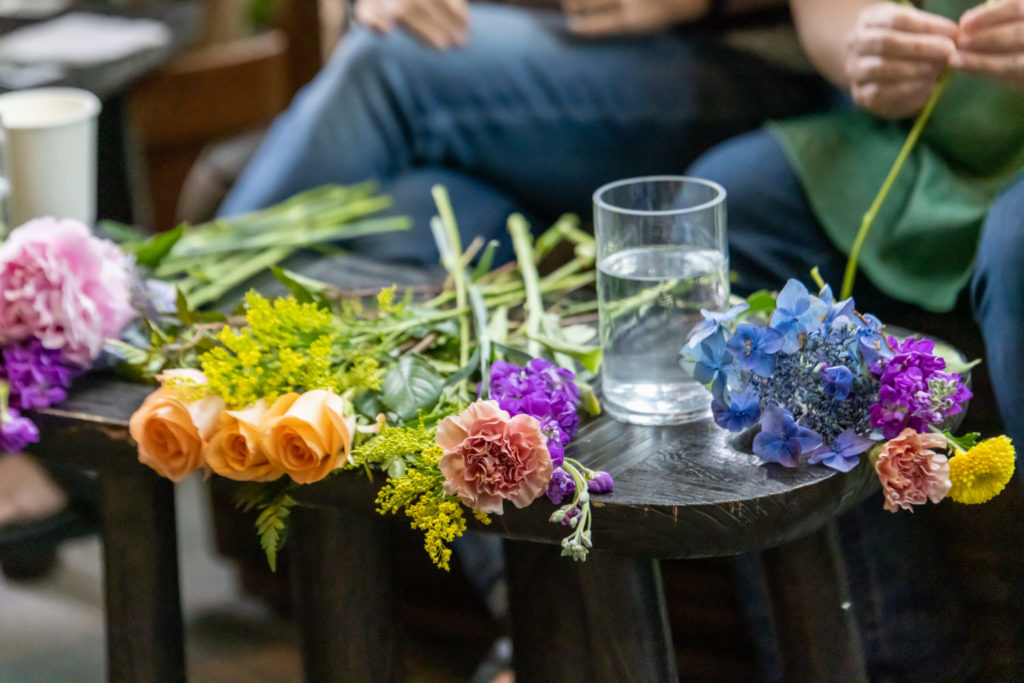
Cutting Gardens in Vogue
We recently joined Bailey Nurseries for an action-packed media event in the heart of New York City. The main goal of the event was to meet the newest Endless Summer hydrangea, ‘Pop Star’, which will hit garden centers in spring 2023.
The introduction is a lacecap Hydrangea macrophylla that boasts impressive rebloom, a genetically compact habit, easy growing with little to no PGRs, and versatility in landscapes and containers.
We saw ‘Pop Star’ in action at Wave Hill Public Gardens, a 28-acre respite from high-rises and bustling streets in the Bronx overlooking the Hudson River, and at Madison Square Park, 6.2 acres of green space in the heart of New York City.
As we walked the gardens and ate lunches and dinners around gorgeous flower arrangements from Bailey Nurseries, we couldn’t help but discuss one of the most versatile and on-trend uses for hydrangea: cut flowers.
At Madison Square Park, its “Spring Forward, Into Summer” exhibition was in full force. Stephanie Lucas, deputy director of horticulture and operations for the park, explained that they had planted cutting gardens that would transition through the seasons and serve as a way for nearby residents to take a part of the garden with them.
The spring displays showcased tulips, hyacinths and daffodils, while the summer display featured dahlias, lotus and cosmos, among many others. Before the July 4 holiday, these flowers were free for the taking at a cut flower stand in the park.
On the last day of our travels, Bailey Nurseries had attendees try their hands at cut flower arrangements featuring hydrangea ‘Pop Star’.

As we know many independent garden centers that host cut flower workshops (or want to start!), we caught up with Mary Eccher, Bailey Nurseries’ cut flower extraordinaire and owner of Designs by Mary Eccher, after the event.
She has spent more than 25 years doing what she calls “trial-and-error gardening” and, although she claims she’s “not a very good gardener,” she has found success with growing flowers and foliage in Minnesota that she cuts for use in arrangements.
L&GR: What are your top tips for cut flower arrangements?
Mary Echher:
- Do not cut in the heat of the day. Cut early in the morning, or in the cool of the late afternoon. Cut a plant stem as far down as possible, in a straight line. Ideally, your stem will be at least 8 inches long.
- Use a very sharp knife or pruning shears to cut. Scissors will cut but also tend to crush and damage the stem.
- Place cuttings in water as soon as you can. Stems do best in slightly warm water (baby bath temperature, not tea-brewing temperature). It’s a good idea to rinse off your cuttings to remove dust, bugs or other debris.
- Remove all foliage below the water line. You can pinch your thumb and index finger and run it along a stem to strip off leaves; I wear gardening gloves when doing this.
- Mix and match colors. I tend to use all brights, or all pastels, but a pop of a bright flower among pastels also works.
- Plain, fresh water is best for vased arrangements — no need to add anything. To extend the life of vased flowers, change out the water in the vase every two to three days.
L&GR: What are some of your favorite plants to grow specifically for cut flower arrangements?
Eccher: Oh boy, I could go on for pages. I love hydrangeas. I have Bloomstruck, and they are my No. 1 all-time favorite plant to cut. I like to cut the “rogue” flowers, the ones that stick up a bit too high on a plant, and I look for the fully mature blooms.
Roses I cut when they are showing just a hint of color, but are still in bud, ready to bloom. Roses open quickly, so don’t cut a fully open rose. I wear heavy rubber gardening gloves when selecting my roses.
Phlox shed a bit but are fun and colorful. I cut them when they have both open blooms and a good deal of buds on the same stem.
Salvia, yarrow and achillea all work well. Remember to remove their leaves, and get them in water ASAP.
Coneflower works as a cut flower, and at the end of season, the little spiky cone is an interesting accent to fall arrangements.
Liatris is one of the great stemmed flowers. They bloom from the top down, so cut them when the top is just starting to show some color. Remove their considerable foliage.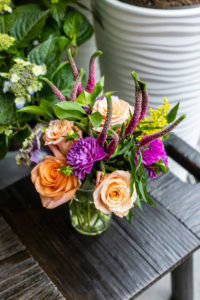
Speaking of fall arrangements, when hydrangeas turn that cool shade of maroon, there are many garden flowers to accompany them — sedum, black-eyed Susan, mums and so many foliages.
L&GR: Let’s talk a little more about foliage. You say you’ve noticed a discovery of darker foliages, not just for barberry anymore. What foliage are you always adding to arrangements?
Eccher: Peony foliage! The flowers tend to bloom earlier than other plants, but their foliage is terrific to use in arrangements.
The long-stem hostas work very well; ninebark holds up very well (I planted ‘Little Devil’ ninebark mostly because they are cute but also to use their foliage in arrangements); and I’ve cut Salix, Potentilla and ‘Ivory Halo’ Dogwood as foliages too.
Weigela has so many varieties, so many colors! I am fond of ‘Pink Rainbow Sensation’ and ‘Shining Sensation’ as cut foliage.
Spirea has lovely little foliage, and when it is in bloom: bonus flowers.
L&GR: Do you have any other words of wisdom?
Eccher: I let cut foliages drink for at least six hours to catch any stems that may wilt. Sometimes, no matter how well you treat your cut blooms or foliages, one or two will not take up water. I usually cut my flowers and plants a day before I will use them to make certain that all of them have taken up water.
You can tell if a stem is fully hydrated. The tip of the cut stem may droop slightly if it is not going to make it. For ball-type hydrangeas, to see if they are usable when cut, squeeze the head gently. They should bounce back and be slightly spongy. If they do not rebound and feel a bit soft, they will most likely not revive.
When I talk to people about arranging flowers, they are pleasantly surprised to find that they can do it. Don’t be intimidated. And definitely cut more than you think you will need. It’s easier to make adjustments if you have a few more flowers or greens on hand.





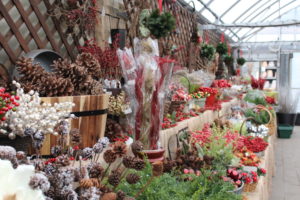
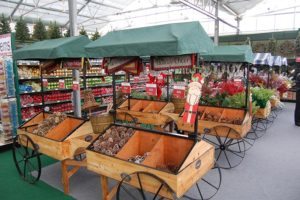
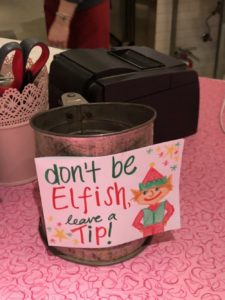


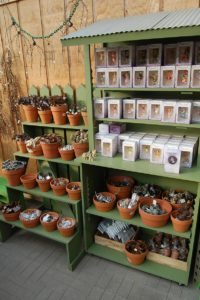

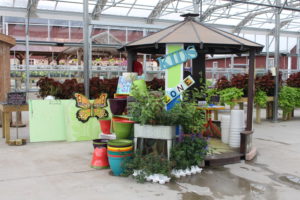


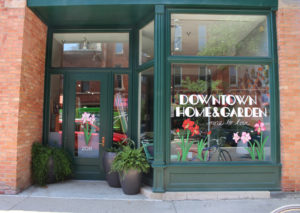

 Videos
Videos





